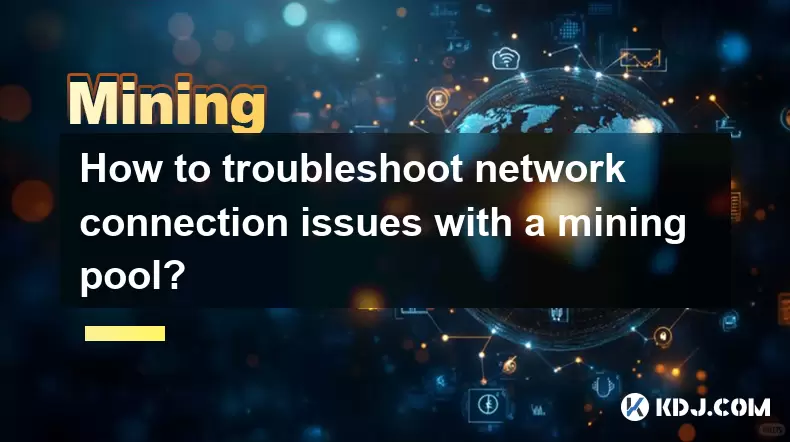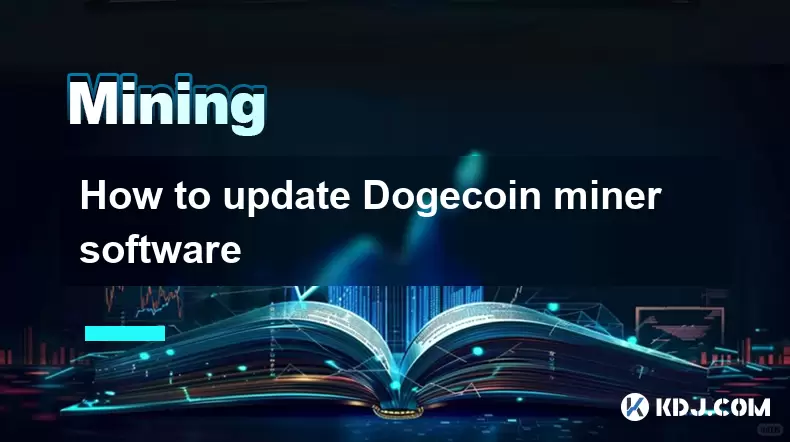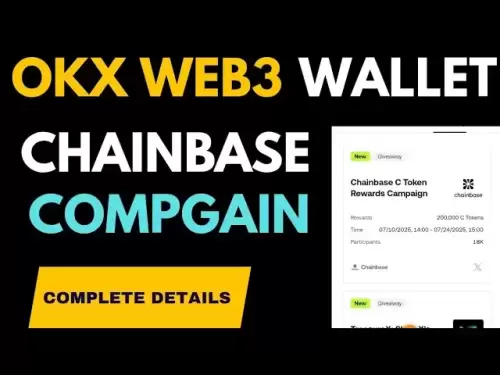-
 Bitcoin
Bitcoin $117,576.6195
-0.21% -
 Ethereum
Ethereum $2,938.5668
-1.35% -
 XRP
XRP $2.7699
4.60% -
 Tether USDt
Tether USDt $1.0003
0.01% -
 BNB
BNB $688.1624
-0.01% -
 Solana
Solana $160.5113
-1.95% -
 USDC
USDC $0.9999
0.01% -
 Dogecoin
Dogecoin $0.1976
-0.70% -
 TRON
TRON $0.3008
1.54% -
 Cardano
Cardano $0.7159
-2.16% -
 Hyperliquid
Hyperliquid $46.2240
2.04% -
 Stellar
Stellar $0.3966
22.03% -
 Sui
Sui $3.3928
-3.11% -
 Chainlink
Chainlink $15.1204
-2.43% -
 Bitcoin Cash
Bitcoin Cash $515.1741
-1.19% -
 Avalanche
Avalanche $20.8130
-0.90% -
 Hedera
Hedera $0.2001
-2.12% -
 UNUS SED LEO
UNUS SED LEO $9.0522
0.72% -
 Shiba Inu
Shiba Inu $0.0...01316
-2.01% -
 Toncoin
Toncoin $2.9843
0.61% -
 Litecoin
Litecoin $92.6745
-2.71% -
 Polkadot
Polkadot $3.9483
-0.06% -
 Monero
Monero $328.5347
1.10% -
 Dai
Dai $0.9998
0.01% -
 Ethena USDe
Ethena USDe $1.0006
-0.01% -
 Uniswap
Uniswap $8.3739
-6.50% -
 Bitget Token
Bitget Token $4.4241
-1.99% -
 Pepe
Pepe $0.0...01222
-3.96% -
 Aave
Aave $300.5203
-3.61% -
 Bittensor
Bittensor $382.2607
-1.92%
How to troubleshoot network connection issues with a mining pool?
Troubleshoot mining pool connectivity by checking software settings, network stability, firewall rules, and server status to ensure uninterrupted mining operations.
Jul 12, 2025 at 03:28 pm

Understanding the Basics of Mining Pool Connectivity
When engaging in cryptocurrency mining, connecting to a mining pool is essential for consistent rewards. A mining pool aggregates computing power from multiple miners to increase the probability of solving blocks and distributing rewards proportionally. However, network connection issues can disrupt this process, leading to reduced earnings or complete disconnection from the pool.
The first step in troubleshooting involves understanding how your mining software communicates with the pool. Most mining applications use protocols such as Stratum V1 or V2, which require stable TCP/IP connections over specific ports like 3333, 4444, or 80. Issues may arise due to misconfigured settings, firewall restrictions, or ISP throttling.
Verifying Mining Software Configuration
One of the most common sources of connectivity problems lies within the mining software configuration itself. You must ensure that:
- The pool address (URL) is correct.
- The port number matches what the pool expects.
- Your worker name and password are properly entered.
For example, if you're using CGMiner or BFGMiner, check the --url, --user, and --pass parameters in your startup script. For NiceHash or Awesome Miner, verify the pool credentials through their graphical interface.
Additionally, some pools require specific algorithms (e.g., SHA-256, Ethash) to be selected during launch. If your mining software is configured for the wrong algorithm, it will not authenticate with the pool server.
Checking Internet and Firewall Settings
Even if your mining software is correctly configured, external network factors can prevent successful pool communication. Begin by testing your internet connection stability using tools like ping or traceroute.
Run the following command in your terminal or command prompt:
ping stratum.poolurl.comIf you experience high latency or packet loss, contact your Internet Service Provider (ISP) or switch networks if possible. Also, ensure that your firewall or antivirus software isn't blocking outgoing connections on the mining port. Whitelist the mining application or temporarily disable the firewall to test this.
Some advanced users may also want to configure port forwarding on their routers, especially if they're behind a NAT. Ensure that the port used by the mining pool is open and directed to the machine running the miner.
Monitoring Server-Side Pool Status
Not all connectivity issues stem from your local setup. Sometimes, the mining pool server itself might be down or undergoing maintenance. Check the pool’s official website, forums, or social media channels for any service announcements or outages.
You can also use third-party services like DownDetector or PoolStatus.io to see if other miners are reporting similar issues. If the problem is server-side, wait for an official update before attempting further troubleshooting steps.
Another useful practice is to try connecting to an alternative pool server provided by the same service. Many pools offer failover URLs or geographically diverse endpoints (e.g., stratum-eu.poolurl.com, stratum-us.poolurl.com) that may have better uptime or lower latency.
Analyzing Log Files and Debugging Output
Mining software typically generates log files or console output that can help identify the root cause of connection failures. Look for messages such as:
- “Connection refused”
- “Socket timeout”
- “Authentication failed”
- “Stale share detected”
These error messages often indicate whether the issue is related to authentication, network latency, or server unavailability. Some mining programs allow you to enable verbose logging for more detailed insights. For instance, in CGMiner, you can add the --verbose flag to get extended debugging information.
Review these logs carefully to spot patterns or recurring errors. They can also be useful when seeking assistance from community forums or technical support teams associated with the mining pool or software.
Testing with Alternative Mining Clients
If you continue experiencing difficulties after checking configuration, network, and server status, consider switching to a different mining client. Compatibility issues between certain versions of mining software and pool servers can occasionally cause unexpected behavior.
Popular alternatives include:
- XMRig for Monero and other RandomX-based coins.
- Claymore's Dual Miner for Ethereum and other GPU-mineable cryptocurrencies.
- PhoenixMiner for Ethereum with optimized performance features.
Download the latest version of the alternative miner, re-enter your pool credentials, and observe if the connection stabilizes. This helps determine whether the issue is tied to the specific mining software you were previously using.
Frequently Asked Questions
Q: What should I do if my worker keeps disconnecting intermittently?
Intermittent disconnections may result from unstable internet, power supply issues affecting your hardware, or outdated mining software. Investigate your network quality, ensure your mining rig has adequate cooling and power delivery, and update your mining client to the latest release.
Q: Can I mine without a mining pool?
Yes, solo mining is possible, but it significantly reduces the frequency of block rewards unless you possess substantial hashing power. Solo mining requires direct connection to a blockchain node rather than a centralized pool server.
Q: How do I know if my firewall is blocking mining traffic?
Check if your mining software reports "connection timed out" or "socket error." Temporarily disable your firewall or antivirus and attempt to reconnect. If the connection succeeds, adjust firewall rules to permit traffic for the mining application.
Q: Is it safe to use public Wi-Fi for mining pool connections?
Public Wi-Fi is generally discouraged due to security risks and potential bandwidth limitations. Mining involves continuous data exchange, which may be throttled or intercepted on insecure networks. Always use a trusted, secure internet connection for mining activities.
Disclaimer:info@kdj.com
The information provided is not trading advice. kdj.com does not assume any responsibility for any investments made based on the information provided in this article. Cryptocurrencies are highly volatile and it is highly recommended that you invest with caution after thorough research!
If you believe that the content used on this website infringes your copyright, please contact us immediately (info@kdj.com) and we will delete it promptly.
- Bitcoin Price's Golden Number: Analyst Predicts Massive Breakout!
- 2025-07-13 02:30:12
- XRP Price Breakout: Analysts Eyeing Explosive Moves
- 2025-07-13 02:50:12
- Grayscale, AI Crypto, and Top Assets: What's the Deal?
- 2025-07-13 02:55:11
- DOGE's $0.25 Ceiling: Will the Meme Coin Break Through?
- 2025-07-13 02:30:12
- Binance, Bloomberg, and a Lawsuit Threat: CZ's Fighting Back!
- 2025-07-13 01:30:12
- Litecoin, BONK, BlockDAG Presale: Navigating the Crypto Frenzy
- 2025-07-13 00:30:12
Related knowledge

How to keep a mining rig cool
Jul 12,2025 at 01:42pm
Understanding the Importance of Cooling in Mining RigsCryptocurrency mining is an intensive process that places heavy demand on hardware components, p...

How much does it cost to start crypto mining?
Jul 13,2025 at 12:22am
Understanding the Basic Costs of Crypto MiningStarting crypto mining involves several upfront and ongoing expenses. The primary costs include hardware...

What do I need to start mining crypto?
Jul 13,2025 at 12:28am
Understanding the Basics of Crypto MiningCrypto mining is the process by which transactions are verified and added to a blockchain, and new coins are ...

How to find the best Dogecoin mining pool for me
Jul 12,2025 at 04:14pm
Understanding the Role of a Mining PoolWhen mining Dogecoin, joining a mining pool can significantly increase your chances of earning consistent rewar...

How often do Dogecoin mining pools payout
Jul 13,2025 at 04:08am
Understanding Dogecoin Mining PoolsDogecoin mining pools are collaborative groups of miners who combine their computational power to increase the chan...

How to update Dogecoin miner software
Jul 12,2025 at 12:36pm
Understanding Dogecoin Mining and the Need for Software UpdatesDogecoin mining involves using specialized software to validate transactions on the Dog...

How to keep a mining rig cool
Jul 12,2025 at 01:42pm
Understanding the Importance of Cooling in Mining RigsCryptocurrency mining is an intensive process that places heavy demand on hardware components, p...

How much does it cost to start crypto mining?
Jul 13,2025 at 12:22am
Understanding the Basic Costs of Crypto MiningStarting crypto mining involves several upfront and ongoing expenses. The primary costs include hardware...

What do I need to start mining crypto?
Jul 13,2025 at 12:28am
Understanding the Basics of Crypto MiningCrypto mining is the process by which transactions are verified and added to a blockchain, and new coins are ...

How to find the best Dogecoin mining pool for me
Jul 12,2025 at 04:14pm
Understanding the Role of a Mining PoolWhen mining Dogecoin, joining a mining pool can significantly increase your chances of earning consistent rewar...

How often do Dogecoin mining pools payout
Jul 13,2025 at 04:08am
Understanding Dogecoin Mining PoolsDogecoin mining pools are collaborative groups of miners who combine their computational power to increase the chan...

How to update Dogecoin miner software
Jul 12,2025 at 12:36pm
Understanding Dogecoin Mining and the Need for Software UpdatesDogecoin mining involves using specialized software to validate transactions on the Dog...
See all articles

























































































